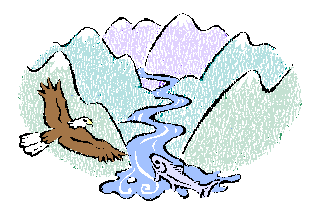The Pure Water Occasional for February 24, 2014
In this end-of-February Occasional, you'll read about coal ash pollution, tons of sewage, and de-oxygenated dead zones in the oceans. A proposed canal in Nicaragua, the sorry state of the River Jordan, and the serious issue of cloud depletion. B. Sharper on the new UNEP water report, Pure Water Annie on sizing whole house filters, actor Mark Ruffalo on the water crisis in your own town, and Steve Maxwell on the ridiculously low cost of water . . And, as always, there is much, much more.
The Pure Water Occasional is a project of Pure Water Products and the Pure Water Gazette.
To read this issue on the Pure Water Gazette's website, please go here.
The Holidays Are Over
With the magic of Groundhog Day, Valentine's Day, and President's Day now behind us, it's time to turn our attention to spring and summer. What better time to get that garden hose filter you've been dreaming about all winter? Don't be the last on your block to own one.
The Global Drinking Water Crisis That Is Hitting Close to Your Home
by Mark Ruffalo
This week, I spent about 20 minutes on HuffPost Live chatting with Alyona Minkovski about the global crisis threatening drinking water. That phrase -- global crisis -- seems to desensitize people, unfortunately. When I tell you that one in five people around the world lacks access to safe drinking water, you're likely to find that unfortunate, but you're not likely to assume that this statistic affects you. So, perhaps I should start over.
Yesterday, I spent about 20 minutes on HuffPost Live chatting with Alyona Minkovski about the local crisis that threatens your drinking water. If you live in Alabama, Georgia, Maryland, Arkansas or New York, and certainly if you live in West Virginia or North Carolina, you know how tenuous and precious our water supplies are -- or you should.
Climate change, extreme energy extraction methods and preventable accidents spurred by loosening restrictions mean that more of us in more parts of the U.S. can't find water that's safe for drinking, cooking and bathing, or we can't find test results to reliably prove our water is safe. That's become painfully apparent to the people of West Virginia, where the governor is now stepping back from his earlier assurances about the safety of drinking water after a chemical spill into the Elk River.![]()
The ways in which we test water safety contribute to this distrust. For example, in Eden, North Carolina, where contaminants from a Duke Energy coal ash dump are still leaching into the Dan River, the government is using instantaneous testing to ascertain water safety levels. Instantaneous testing is exactly what it sounds like; officials dip a glass jar at the surface of the water and pull up a small sample. Whatever they get in that jar at that moment and at the surface of the river is what they use to determine the health of the entire water column. That approach makes little sense when the people who will consume, cook with and bathe in that water will do so for many, many instants. Alternatively, cumulative testing is far more indicative of what we should know about the chemicals in our water. By absorbing contaminants over time, we are sampling not just from the surface, but at all levels of the water column.
Next week, I'll be on Cape Cod talking about emerging technologies that will fingerprint, monitor and help reduce water pollution. Scott Smith, Water Defense chief scientist and founder of OPFLEX Technology, and I will hold a town hall meeting at Cape Cod Community College. The event is open to the public, and I hope you'll come out to learn more about a global crisis that matters where you live, and what we should be doing in response.
Get involved: http://www.waterdefense.org
Source: Huffington Post.
Pure Water Gazette Fair Use Statement
The UN Says that Water Pollution is Deadlier Than War
by B. Sharper
Gazette Numerical Wizard Bee Sharper Indexes the Numbers that Harper's Misses
Tons of sewage and waste from industry and agriculture that are dumped into global waterways each year --2,000,000.
Children that are killed worldwide each year by the resulting contamination -- 1,800,000.
Children under five that die each minute from water pollution--3.
Rank of water pollution among all means of violence, including war, as a killer of humans -- #1.
Percentage of the world's hospitals beds that are occupied by victims of water contamination worldwide -- >50%.
Percentage of wastewater in underdeveloped countries that is dumped directly without treatment into lakes, rivers, and oceans -- 90%.
Estimated area of marine ecosystems that are being turned to de-oxygenated "dead zones" in seas and oceans by dumping -- 245,000 km2.
Increase in nitrous oxide and methane emissions which affect our climate expected because of wastewater dumping between 1990 and 2020 -- 25%.
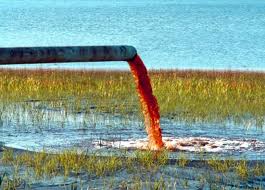
Source of facts is a recent report of UNEP (United Nations Environment Programme). Read the full report.
Week's Water News
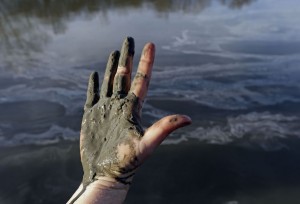
Coal Ash
Water news this week was dominated by the coal ash pollution in North Carolina and the growing awareness of the serious implications of the drought in California.
As stewards of earth’s resources the human race sometimes seems like a bunch of teenagers who can often sparkle, shine, and create marvels, but who are also unable to see the long-term consequences of actions and therefore look reckless to more mature observers. I guess the human condition makes it so that we are both the reckless ones and the observers, ever learning. Nancy Gross from her article, “Restless Learners.”
More Bad Water News from Camp Lejeune
People stationed at North Carolina’s Camp Lejeune while the water there was contaminated were more likely to die from several types of cancer, as well as Lou Gehrig’s disease, according to an official government report released this week.
It’s the latest in a series of reports showing the contaminated water at the base seriously affected Marines and their families.
“The study found elevated (risks) at Camp Lejeune for several causes of death including cancers of the kidney, liver, esophagus, cervix, multiple myeloma, Hodgkin lymphoma and ALS (amyotrophic lateral sclerosis, also known as Lou Gehrig’s disease),” Frank Bove of the Centers for Disease Control and Prevention and colleagues wrote in their report, published in the online journal Environmental Health. Full report from NBC News.
Mercury contamination in Penobscot River lobsters was known for 8 years. Researchers who conducted tests have known for at least eight years that lobsters at the mouth of the Penobscot River contained “hazardous” levels of mercury, but consumers were not told until the state announced it this week.
In parched states, fracking's thirst grows. According to the petroleum industry, most new wells in this country now use fracking to coax an average of 250 barrels of oil or 1.3 million cubic feet of natural gas from the ground per day. But that can't happen without water – about 3 million to 8 million gallons per well before extraction begins.
A canal across Nicaragua: Is this for real? It would be an engineering feat of gargantuan proportions -- a $40 billion Chinese-built canal across Nicaragua to boost the flow of ships between the Caribbean and the Pacific. Environmentalists say it is a recipe for disaster.
Water in America: Is it safe to drink? A chemical spill that left 300,000 residents of Charleston, West Virginia, without tap water last month is raising new concerns about the ability of the United States to maintain its high quality of drinking water.
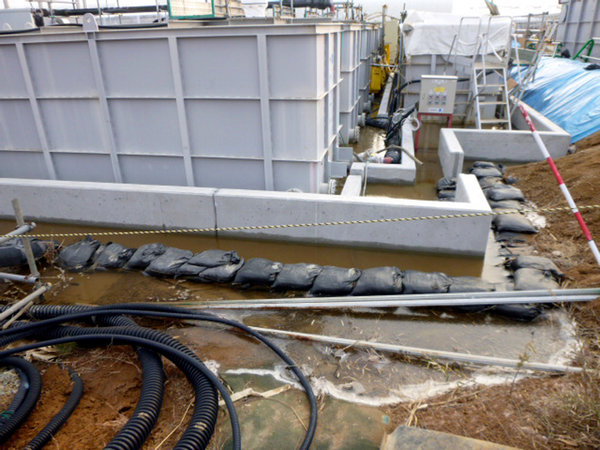
Worst spill in 6 months is reported at Fukushima. About 100 tons of highly radioactive water leaked from one of the hundreds of storage tanks at the devastated Fukushima nuclear plant, its operator said this week, calling the leak the worst spill at the plant in six months.
Levi Strauss tests 100 percent recycled water in parts of its jeans production. Levi Strauss has created a process for using 100 percent recycled water in parts of its garment production.
Biblical waters: Can the Jordan River be saved? If Jesus were to plunge into the Jordan River today, he might come out with a nasty chemical burn. The great biblical waterway is now little more than a shallow, unimposing trickle of sludge, a murky body of water that is in danger of withering into nothingness.
Federal study confirms oilsands tailings found in groundwater, river. New federal research has strongly backed suspicions that toxic chemicals from Alberta's vast oilsands tailings ponds are leaching into groundwater and seeping into the Athabasca River.
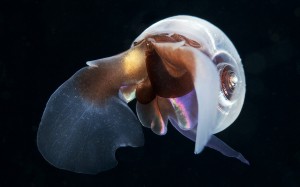
Sea Snail That Is Taking a Beating As Oceans Acidify
Acid trap. In oceanography, the big story over the past half century has been the wholesale removal of the seas’ top predators through overfishing. But the story of the oceans for the coming century may be a revolution that starts from the bottom of the food chain, not the top. Click picture for a larger view.
Flouride and other chemical risks. New research finds exposure to fluoride in drinking water and several other common chemicals in early life diminishes brain function in children. Study lead author, Philippe Grandjean, tells host Steve Curwood fluoride, flame retardants, pesticides and and fuel additives may be affecting children's intelligence.
Life on Mekong faces threats as major dams begin to rise. With a massive dam under construction in Laos and other dams on the way, the Mekong River is facing a wave of hydroelectric projects that could profoundly alter the river’s ecology and disrupt the food supplies of millions of people in Southeast Asia.

Clouds may be a decisive factor in the severity of global warming. Clouds are a big lever in the climate. Because they’re light in color, they’re reflective, taking 10 to 20 percent of the sunlight that reaches the Earth and reflecting it back into space. “Just a 1 or 2 percent change in cloud cover is significant in terms of warming. Remove all the clouds and the climate would warm big time — a lot more than doubling the CO2 in the atmosphere.”
Water Should Cost More: An Unpopular View
Editor's Note: The Pure Water Gazette has long supported the maintenance of excellent, well-funded public water supplies and opposed the privatization of water. We must protect our water from ownership by for-profit agencies, and we're going to have to get beyond the silly notion that water is free. It isn't, and we must greatly increase the price we pay for water so that superb public water systems can be maintained.
The piece below is excerpted from an informative article about the state of the current water treatment industry, A Flood of Challenges - A Sea of Opportunities by Steve Maxwell. --Hardly Waite.
There is no substance more critical to life than water - we cannot live without it for more than a few days.
Modern water treatment techniques and extensive distribution infrastructure have allowed the development of our advanced industrial economies, and have enabled dramatically increasing standards of living for many of the world's people. Modern irrigation techniques have made it possible to feed a rapidly growing world population, and to turn deserts into productive farmland and sprawling metropolises. Yet we continue to deplete and pollute our limited water resources at an alarming rate - and we steadfastly look the other way while
our water treatment and distribution infrastructure begins to crumble.
We are rapidly reaching the point at which we will no longer have sufficient clean water to support our current lifestyles. Half of the world's population is expected to suffer from severe water shortages by the year 2050. Yet, much of our population still seems to simplistically believe that water falls out of the sky and that it should be basically free, forgetting that it costs money - billions and billions of dollars a year - to collect, clean, store and distribute water.
Many of our treatment plants, reservoirs, and distribution pipelines were built fifty to a hundred years ago and are rapidly decaying, with leakage rates as high as 50% in some older cities. More ominously, many of our underground underground aquifers and surface water sources are irreversibly contaminated, or are drying up from decades of overuse.
Nonetheless, political leaders are typically rewarded for minimizing public spending rather than insuring that their communities will have access to vital water resources in the future.
City councils are loath to raise water rates, even though big percentage increases would only amount to a few dollars a month for most Americans.
At a fundamental level, the main reason for this nonchalance and lack of attention is that water remains truly - actually absurdly - cheap relative to its real value. Americans today pay an average of a quarter of a penny per gallon for the clean drinking water that seems to magically flow out of our taps - about $25 a month for the typical family. One simply cannot find another product whose real value so far exceeds its price - or for that matter, one whose price is often so unrelated to its true cost of delivery.
Eventually, we will all bear the costs of correcting the water pollution problems that we have created, and rebuilding the infrastructure that we have allowed to fall into decay - huge costs that current water prices do not properly reflect.
Hollywood starlets pitch all manner of natural spring waters, vitamin waters, energy waters, smart waters, holy waters and various other so-called specialty beverages right up to "Bling H2O" - which proudly calls itself the most expensive bottled water - all now available at a cost of only a hundred to a thousand times the price of the tap water from which they are virtually indistinguishable. Also this year came breaking news that Madonna spends $10,000 a month on specially blessed water, with cartons of it shipped to wherever she is staying at the moment.
There seems to be no end to the appetite of the American public to pay ridiculously high prices for essentially the same thing that comes out of their taps, while simultaneously a $10 or $15 increase per month in tap water fees can generate a political firestorm.
But the fad may be moderating - some upscale restaurants are now promoting the virtues of tap water, and no less a water authority than the National Association of Evangelicals has said, "Spending $15 billion a year on bottled water is a testimony to our conspicuous consumption, our culture of indulgence…. drinking bottled water may not be a sin, but it sure is a choice."
How to decide what size whole house filter you need
by Pure Water Annie
![pwanniemedium[1]](https://ymlp.com/https.php?id=www.purewatergazette.net/blog/wp-content/uploads/2012/05/pwanniemedium1-246x300.jpg)
More good advice from the Occasional's Technical Department.
One of the critical factors in determining the size of a "whole house" water treatment system, whether you're removing iron from well water or chemicals from city water, is the rate of service flow you need. To work effectively, the filter must be large enough to handle the volume of water, in gallons per minute, that you plan to run through it.
Here's a chart that will help you take an educated guess at how much water you would expect to use. The numbers are based on Annie's years of experience in water treatment and some clever theft from other sources.
|
|
||||||||||||||||||||||||||||||
|
This chart is intended as a suggestion only. The nature of the building and the individuals who live there must be taken into consideration. It is intended for use in sizing for standard residential dwellings. Mansion dwellers must look elsewhere for advice. Filter sizing is one of the really hard areas in water treatment, and it is common to undersize some equipment in the name of convenience and practicality. For example, tank-style carbon filters are often sized to handle twice the carbon maker's recommended flow rate because on city water systems there is no grave consequence to under-sizing. Even with iron filters for wells, it is common to use a 10” X 54” birm filter on applications where the media manufacturer would call for a much larger size. This usually works unless the application involves long, sustained service at a rate that exceeds the recommended maximum. For example, the engineering recommendation for a 10” birm filter is for a flow rate of only two to three gallons per minute, but the filter will usually work fine for a family of 3 in a two bathroom home. That is because most of the time, water is being used at no more than a couple of gallons per minute. However, if the home owner runs irrigation water at 7 gpm for a couple of hours, the filter will fail. GPM means Gallons Per Minute of Service Flow. |

Please visit our RO Parts Page for tanks and accessories.
Thank you for reading. Please come back next week.
Places to Visit on Our Websites in the meantime.
Garden Hose Filters. Don't be the last on your block to own one.
Model 77: “The World’s Greatest $77 Water Filter”
”Sprite Shower Filters: You’ll Sing Better!”
An Alphabetical Index to Water Treatment Products
Our famous whole house Chloramine Catcher
Pure Water Occasional Archive: Sept. 2009-April 2013.
Write to the Gazette or the Occasional: pwp@purewaterproducts.com
Please Visit
The Pure Water Gazette – now in an easier to navigate format.
![occasionalbanner300[1]](https://ymlp.com/https.php?id=purewatergazette.net/blog/wp-content/uploads/2013/04/occasionalbanner3001.gif)
